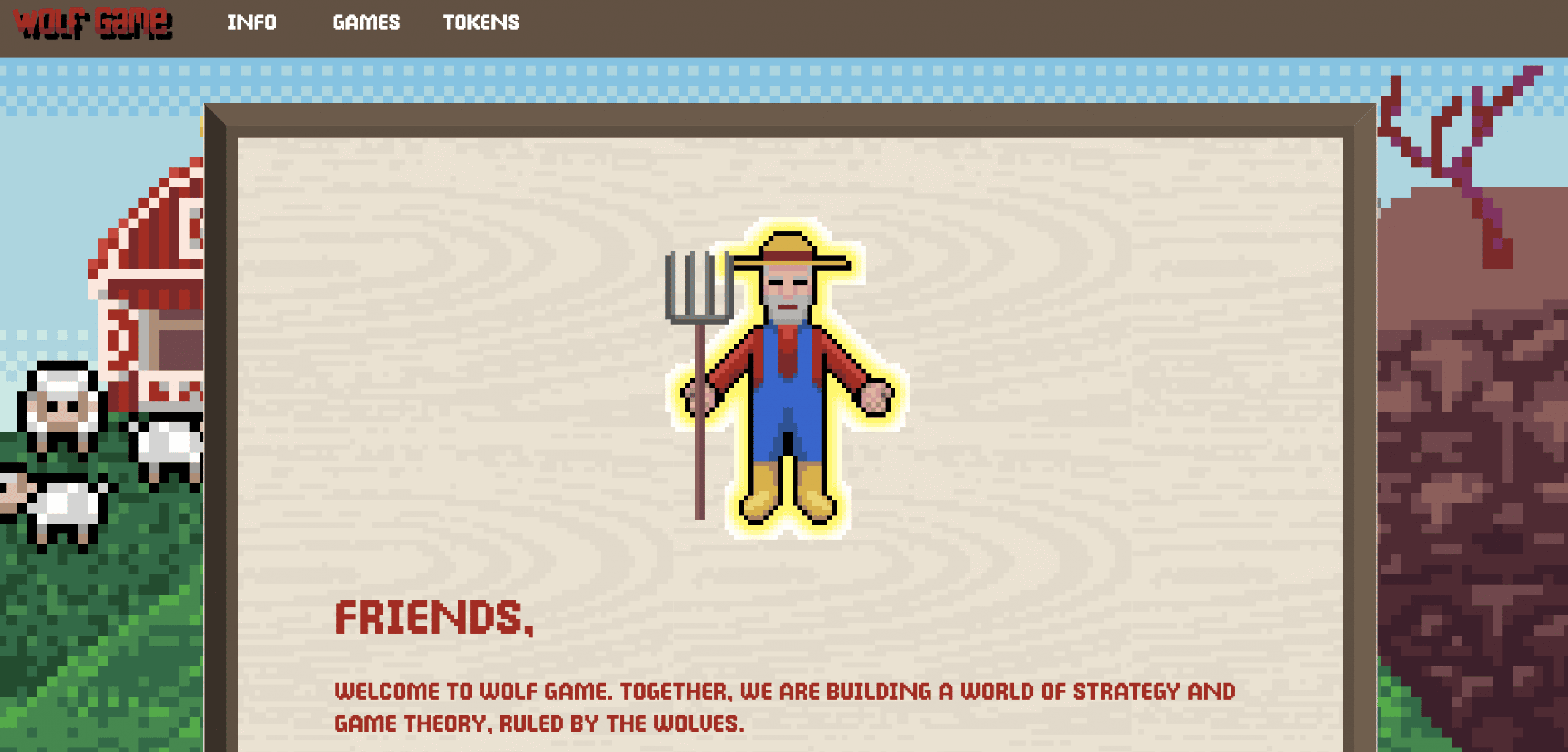With the NFT market growing rapidly, creators and developers are looking for new use cases for non-fungible tokens. One of the latest utilities of NFTs is to stake these tokens to generate passive income.
In this guide, we review the best NFT staking projects to consider in 2022. We will also explain what NFT staking is and how investors can benefit from this passive income strategy.
Best NFT Staking Projects for 2022
Here is a list of the best NFT collections that support staking in 2022:
- Tamadoge – Overall Best NFT Project for 2022
- Lucky Block – Market-Leading NFT Competitions Platform
- Quint – Exciting NFT Project With Super Staking Features
- Mobox – Play to Earn Platform With NFT Yield Farming
- Mutant Cats – Stake Mutant Cats to Earn New NFTs
- Doge Capital – Stake NFT Pixel Art
- Famous Fox Federation – Stake Multiple NFT Collections
- Wolf Game – NFT Game With Staking
- Axie Infinity – Popular P2E Game to Stake LAND Tokens
- ZooKeeper – Gamified NFT Yield Farming
- Roo Troop – Community-Driven NFT Project Supporting Creators
Before deciding to invest in an NFT for the purpose of staking, it is crucial to consider its future prospects.
In the following sections, we review the projects listed above, while paying close attention to their staking features.
A Closer Look at the Best Staking NFTs
Staking is not exactly a new concept, especially for those who are already familiar with cryptocurrencies.
In simple terms, the process often refers to depositing NFTs into a DeFi platform to collect rewards. To get started, investors only need a cryptocurrency wallet with NFTs.
Moreover, more NFT projects have their own in-built DeFi tools – which makes the process even more seamless.
However, the tricky part is that not all NFTs can be used for staking. On the contrary, there are only a handful of NFT projects that support this feature.
Below, we have included a detailed review of some of the most popular staking NFT projects available today.
1. Tamadoge – Overall Best NFT Project for 2022
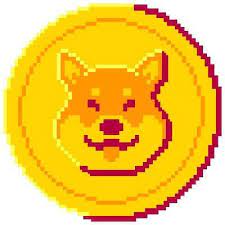 Tamadoge is one of the best new crypto projects of the year and unique in that it has a proud meme coin – TAMA – as well as NFT ownership and play-to-earn gaming elements in its wider ecosystem.
Tamadoge is one of the best new crypto projects of the year and unique in that it has a proud meme coin – TAMA – as well as NFT ownership and play-to-earn gaming elements in its wider ecosystem.
TAMA enjoyed a highly successful IEO launch at the end of September and returned nearly 2,000% gains for early investors, rocketing up the meme coin charts to become the third largest by trading volume, trailing only Dogecoin and Shiba Inu.
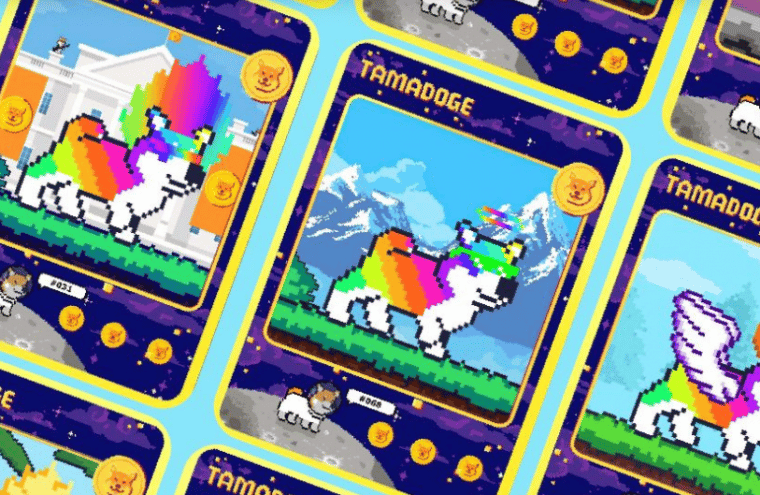
The project has now released the first 100 NFTs in its collection – ultra-rare pets available on OpenSea via auction.
The NFT pets will be at the center of the Tamaverse and allow holders to battle others for prizes and rewards.
Working like 90s craze Tamagotchi, holders look after, feed and care for their pets – treating them with toys and food – so they grow into adults.
Once fully grown holders can battle other Pet owners for their place at the top of a global leaderboard.
Later in the roadmap more P2E arcade games will be released, and the pets will transform into 3D and then augmented reality – with an app released that will allow owners to take their pets out into the real world to explore.
The pets will come in three tiers, ultra-rare, rare and common. The first 100 ultra-rare pets are on sale via auction on OpenSea now and will boast increased speed, agility and awareness, given their owners a 90% improved chance to beat other pets.
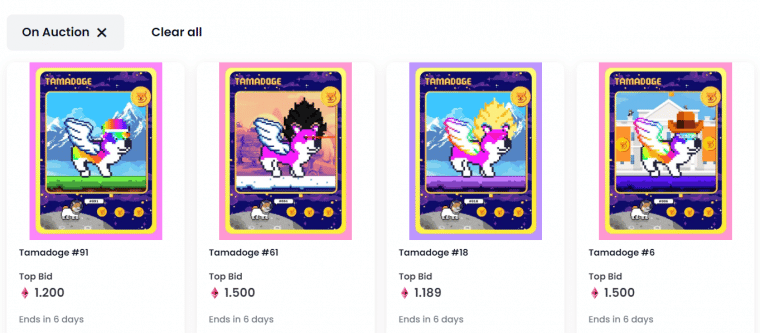
The auction will run until October 13, with starting bids at 1ETH. The other pets (1,000 rare and 20,000 common) will all have individual looks and traits and will be available for sale in the coming weeks.
Tamadoge pets do not have a traditional staking function, but their play-to-earn element means holders will be able to return rewards via their ownership.
2. Lucky Block – Market-Leading NFT Competitions Platform
 Launched in 2022, Lucky Block is one of the most popular crypto projects of the year. This platform regularly hosts competitions, offering every Lucky Block NFT holder a chance to win prizes. Moreover, investors can earn rewards simply for participating.
Launched in 2022, Lucky Block is one of the most popular crypto projects of the year. This platform regularly hosts competitions, offering every Lucky Block NFT holder a chance to win prizes. Moreover, investors can earn rewards simply for participating.
In fact, Lucky Block is the first project to offer blockchain-based prize draw competitions. Not only that, but unlike the majority of the new NFT projects being launched, Lucky Block has not limited itself to a single collection. Instead, it regularly releases a new series of NFTs, each twinned with a unique competition.
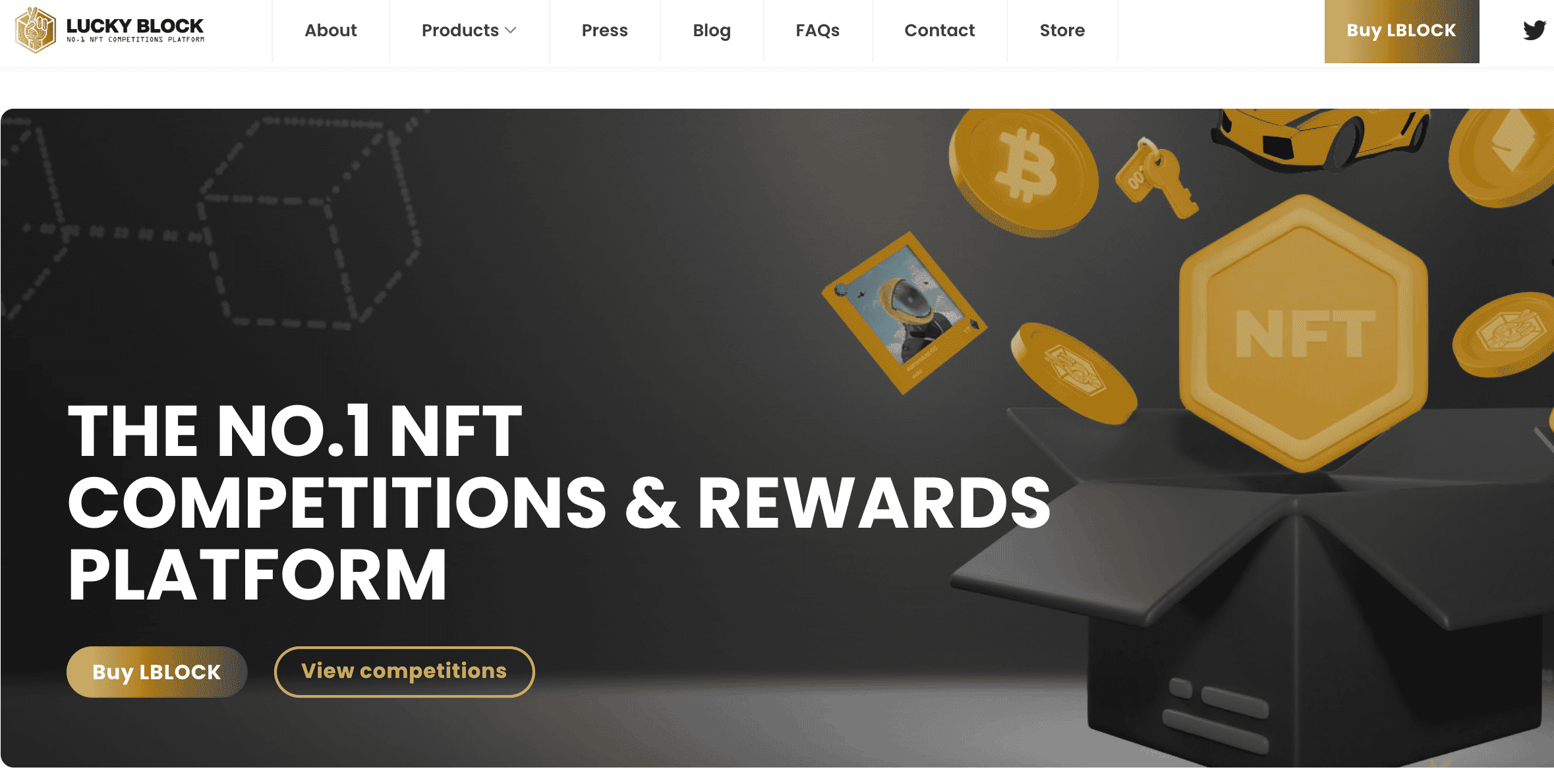
When an NFT collection sells out, the underlying smart contract will randomly select an eligible winner from those who entered the competition. For instance, at the time of writing, Lucky Block features a limited collection of 10,000 Platinum Rollers Club NFTs. Holders of these NFTs are automatically entered into Platinum Rollers Club competitions hosted by the platform.
Competitions are held every week, and the prizes range from game consoles to Lamborghinis. Additionally, Lucky Block also has its own native digital token – LBLOCK. Those who hold Lucky Block NFTs are also offered rewards in this token. The longer the investor holds the NFT, the more tokens they are rewarded.
Holding LBLOCK tokens also unlock exclusive prizes on the Lucky Block platform, regardless of whether they win a competition. The LBLOCK token can be purchased from popular crypto exchanges such as Uniswap, MEXC, and LBANK. This is a dual ERC-20 and BSc token hosted on the Ethereum and Binance networks, respectively.
Crucially, while Lucky block does not ‘technically’ support NFT staking, for all intents and purposes, it incentivizes those who hold their non-fungible tokens long-term. This way, investors have the opportunity to participate in competitions and get rewards in LBLOCK tokens simply by HODLing.
Read our detailed guide on how to buy Lucky Block NFTs here.
3. Quint – Exciting NFT Project With Super Staking Features
 Quint is one of the coolest NFT projects that was launched in recent years. This ecosystem comprises a few notable features, including an NFT marketplace, the Quint shop, and a super staking pool. The super staking pool is, however, what sets this project apart from the rest.
Quint is one of the coolest NFT projects that was launched in recent years. This ecosystem comprises a few notable features, including an NFT marketplace, the Quint shop, and a super staking pool. The super staking pool is, however, what sets this project apart from the rest.
While typical NFT staking pools offer rewards in the form of digital tokens, the Quint staking pool also aims to add unique real-world collectibles to its treasury. These incentives range from complimentary stays in popular travel destinations, supercar experiences, and discounts on hotel bookings, restaurants, properties, and much more.
In addition to this, the Quint platform also runs luxury raffle pools, which offer exclusive prizes to participants. To get started, investors can purchase tailor-made NFTs via the platform’s marketplace. Quint focuses on offering luxury NFT services, which means that investors can also get freshly minted NFTs framed and get them delivered to their doorsteps.
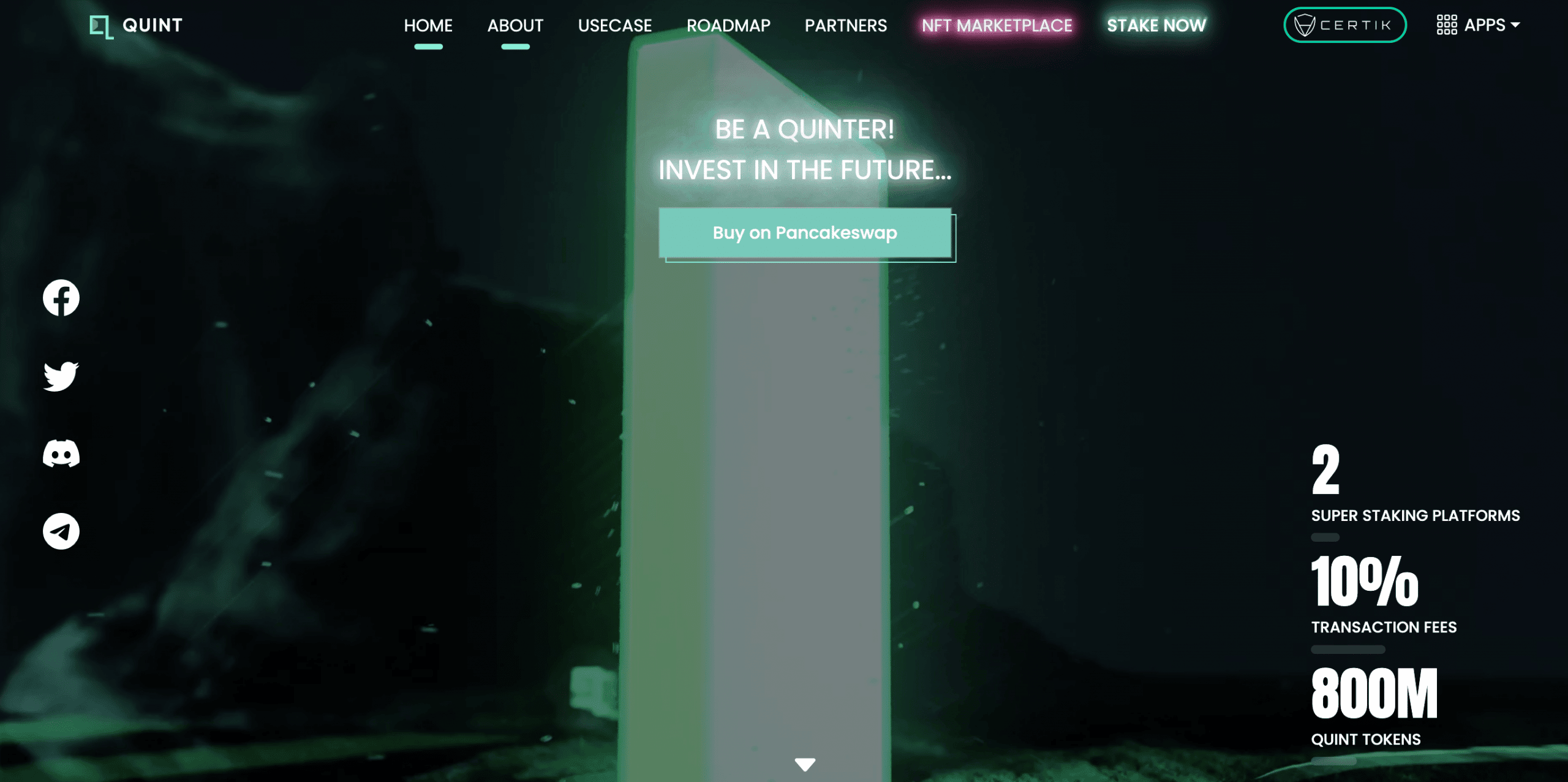
One of the unique future goals of Quint is to develop real estate in the real world. The platform will then make Quint holders fractional owners of these luxury properties in proportion to their investment into the project. The Quint team is also working on a P2E game concept and will be adding multi-chain support to the platform.
The Quint ecosystem is hosted by the Binance Smart Chain. To buy NFTs, investors need to have Quint tokens in their wallet – which can be purchased via PancakeSwap.
4. Mobox – Play to Earn Platform With NFT Yield Farming
 Mobox is a play to earn gaming platform that combines NFTs with yield farming. The Mobox metaverse is called MOMOverse, and is built on the Binance Smart Chain. Within this ecosystem, players can mint, earn, or trade Mobox NFTs – which are called MOMOs.
Mobox is a play to earn gaming platform that combines NFTs with yield farming. The Mobox metaverse is called MOMOverse, and is built on the Binance Smart Chain. Within this ecosystem, players can mint, earn, or trade Mobox NFTs – which are called MOMOs.
Each MOMO NFT comes with unique qualities and a randomly generated hash power. Mobox allows players to stake their NFTs in order to farm the platform’s governance token MBOX. The more NFTs that are staked, the more MBOX rewards can be earned each day.
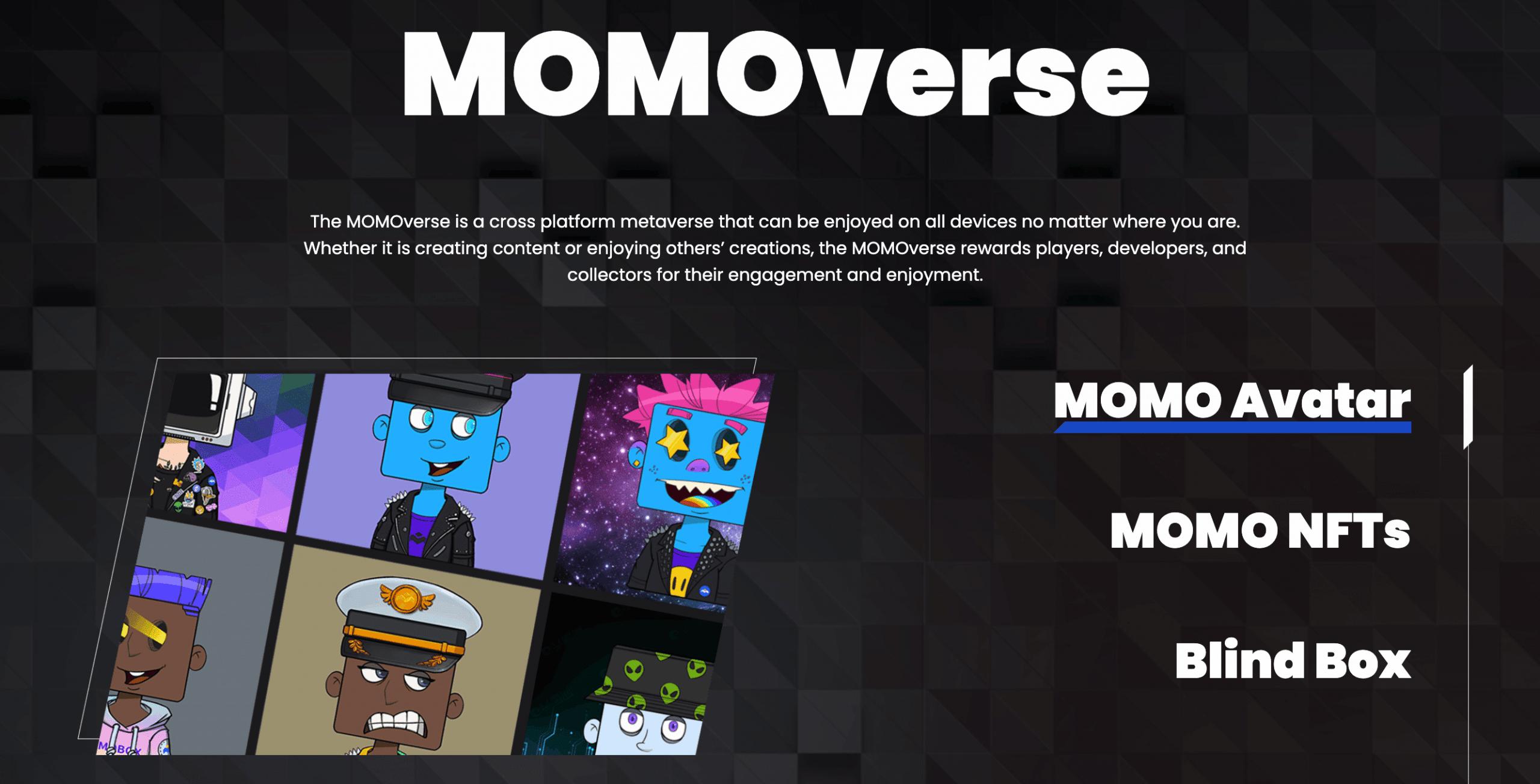
Another plus point is that the MOMO NFTs can not only be used within the MOMOverse, but also on Mobox’s partner platforms. Similarly, NFTs from partnering projects can be utilized in the Mobox ecosystem too. For instance, investors who have staked PancakeSwap Profile NFTs will be able to use them on MOMOverse – without having to unstake them from the DEX.
What’s more, this way, players can enter team battles in Mobox to collect MBOX rewards and earn CAKE staking points on PancakeSwap at the same time. This feature is a reason why Mobox continues to be one of the best metaverse projects to emerge in the NFT space.
5. Mutant Cats – Stake Mutant Cats to Earn New NFTs
 Mutant Cats is perhaps the first crypto project that purchases and fractionalizes other blue chip NFTs. The project has set up a secure vault that contains NFTs from some of the most popular projects of all time. Some of the most notable NFTs in the Mutant DAO vault include CryptoPunks, Bored Ape Yacht Club, Tyler Hobbs, and more.
Mutant Cats is perhaps the first crypto project that purchases and fractionalizes other blue chip NFTs. The project has set up a secure vault that contains NFTs from some of the most popular projects of all time. Some of the most notable NFTs in the Mutant DAO vault include CryptoPunks, Bored Ape Yacht Club, Tyler Hobbs, and more.
In addition to this, the project has also launched its own collection of 9,999 NFTs. These are built on the Ethereum blockchain and feature unique feline avatars with different traits. Investors can buy Mutant Cat NFTs and stake them to earn FISH tokens, the native digital token of the project.
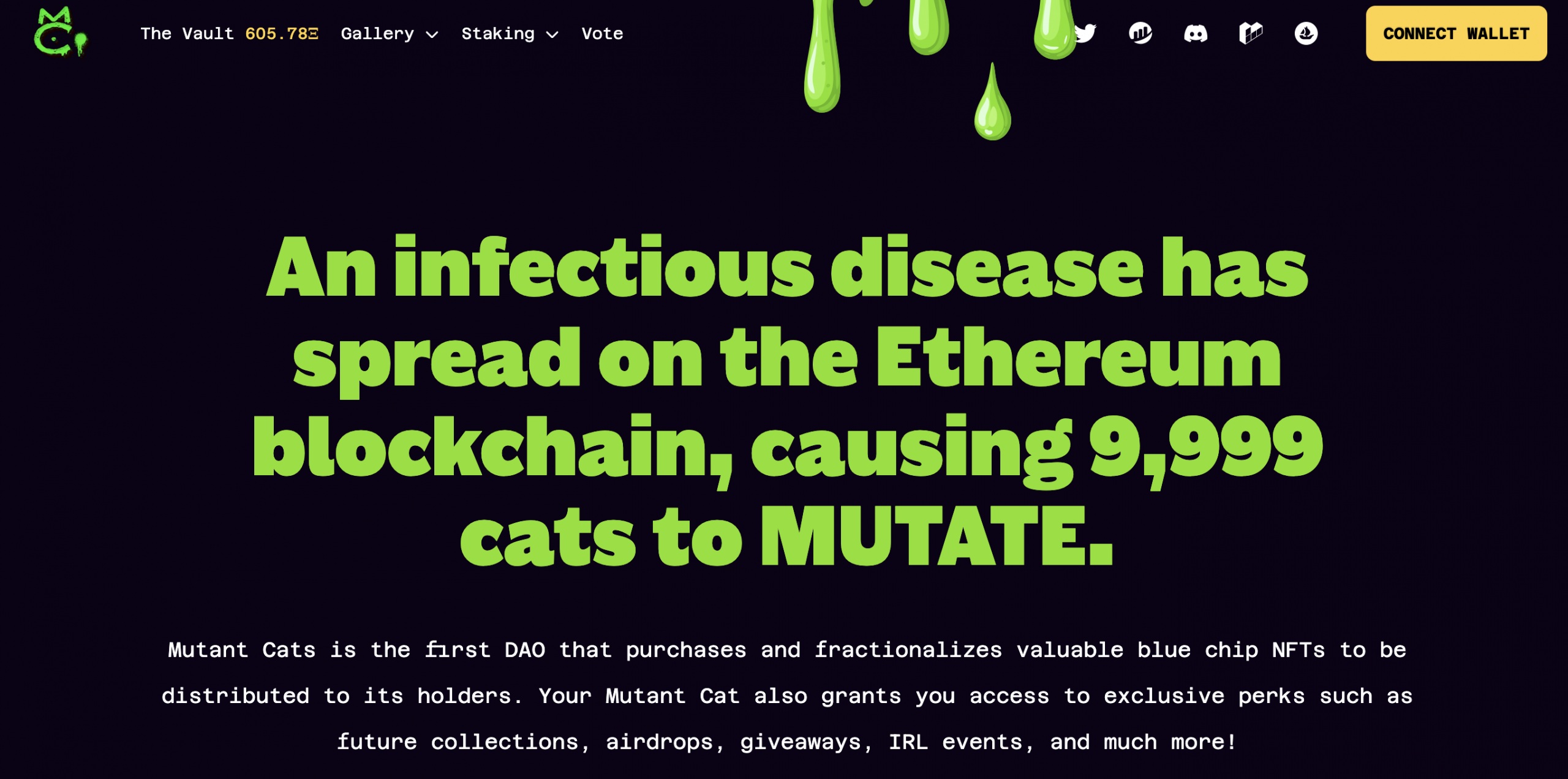
The staking program pays out 10 FISH tokens per day for each staked NFT. These FISH tokens represent fractional ownership of the DAO’s assets stored in the vault. As per the Mutant Cats team, the project is also planning to establish specialized groups of community members who are dedicated to the growth of the project.
6. Doge Capital – Stake NFT Pixel Art
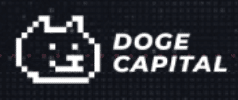 Doge Capital is another project that has launched an exclusive collection of art NFTs. There is a total of 5,000 NFTs, each depicting a 24×24 piece of art. Moreover, like the Mutant DAO, Doge Capital also invests in other popular NFT projects.
Doge Capital is another project that has launched an exclusive collection of art NFTs. There is a total of 5,000 NFTs, each depicting a 24×24 piece of art. Moreover, like the Mutant DAO, Doge Capital also invests in other popular NFT projects.
The platform has set up a vault named Woofbank, where it stores the NFTs and other assets for its community. The project allows investors to stake their Doge Capital NFTs to earn DAWG tokens in return. These digital tokens can be purchased via some of the best cryptocurrency exchanges in the market.

In the upcoming stages of the project, Doge Capital will also start a renting service through which its holders can borrow NFTs stored in the Woofbank vault. The ecosystem will also include a play to earn game, which will help the users generate DOGE tokens as revenue.
There is a total supply of 30 million DOGE tokens. The project aims to fully launch towards the end of 2022. However, it has already attained popularity as one of the best staking NFT projects available today.
7. Famous Fox Federation – Stake Multiple NFT Collections
Famous Fox Federation is a Solana-based project that features multiple NFT collections. At the time of writing, it has a Genesis collection, which consists of 7,777 generated foxes. Additionally, it also has the Pixel collection, which are the pixelated versions of Famous Foxes. This set also has a total of 7,777 NFTs.
The metaverse collection comes with 3,000 NFTs. These function as the key to unlocking the player’s private metaverse space. Players can show off their NFTs in this virtual space and even earn rewards. Moreover, the project also has an exclusive Friends & Foes Collection that consists of a series of NFTS created by famous artists.
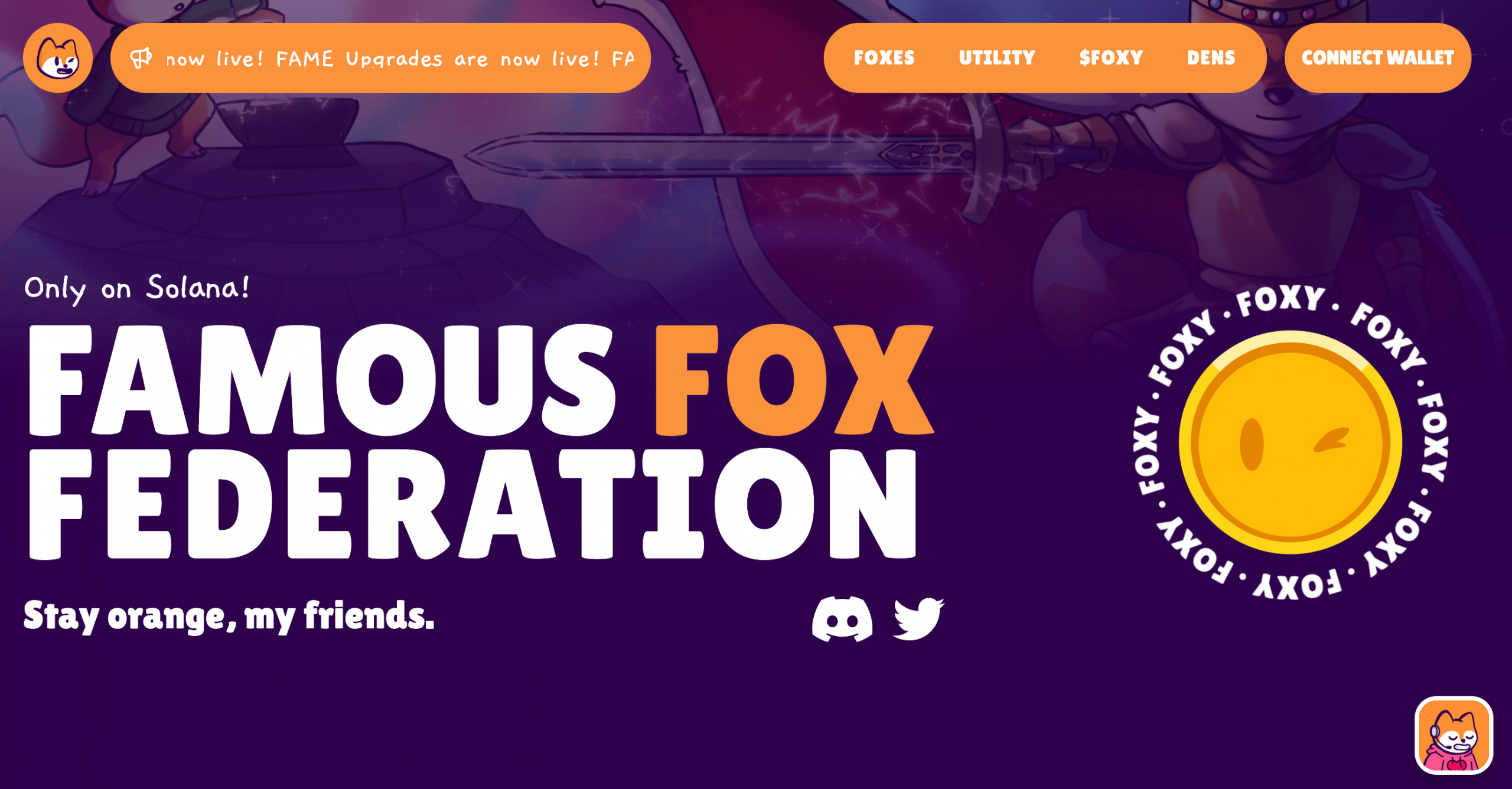
There are only 15 NFTs in this set, and they are usually auctioned off for FOXY – the digital token of the Famous Fox ecosystem. All Famous Fox NFTs can be staked to generate rewards in the form of FOXY. The tokens have to be staked for a minimum of three days, with no maximum duration.
The FOXY tokens claimed can be used to mint upcoming NFTs and unlock other features on the platform. The amount of FOXY generated will depend on not only the number of tokens staked but also the collection. For instance, the Genesis collection earns 100 FOXY tokens a day, whereas the Pixel set earns only 25.
8. Wolf Game – NFT Game With Staking
 Wolf Game is a metaverse project that has integrated NFT staking into its gameplay. In this universe, NFTs are available as Wolves and Sheep. Players will have to stake their sheep NFTs in order to protect them from wolves.
Wolf Game is a metaverse project that has integrated NFT staking into its gameplay. In this universe, NFTs are available as Wolves and Sheep. Players will have to stake their sheep NFTs in order to protect them from wolves.
Staking Sheep NFTs will also earn players WOOL tokens as a reward. In the case that Sheep NFTs are not staked, the wolves will steel all the WOOL tokens accumulated by the player. In other words, this project makes NFT staking fun and immersive.
However, there is only a limited supply of 5 billion WOOL tokens. When the supply reaches 2.4 billion tokens, the staking faucet will turn off. As such, those interested in this token will want to consider getting started soon to make the most of the staking feature on offer.
9. Axie Infinity – Popular P2E Game to Stake LAND Tokens
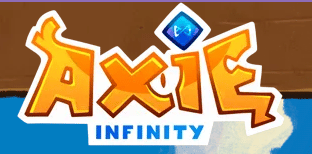 Axie Infinity is often referred to as one of the best NFT games to date. It is built as a play to earn game, where players can battle each other using NFTs. These NFTs are called Axies, each featuring unique strengths and weaknesses.
Axie Infinity is often referred to as one of the best NFT games to date. It is built as a play to earn game, where players can battle each other using NFTs. These NFTs are called Axies, each featuring unique strengths and weaknesses.
As they progress in the game, players can complete challenges and earn AXS tokens in return. Axie Infinity is constantly adding more features to its gameplay. One of the latest additions is Lunacia, the Axie homeland.
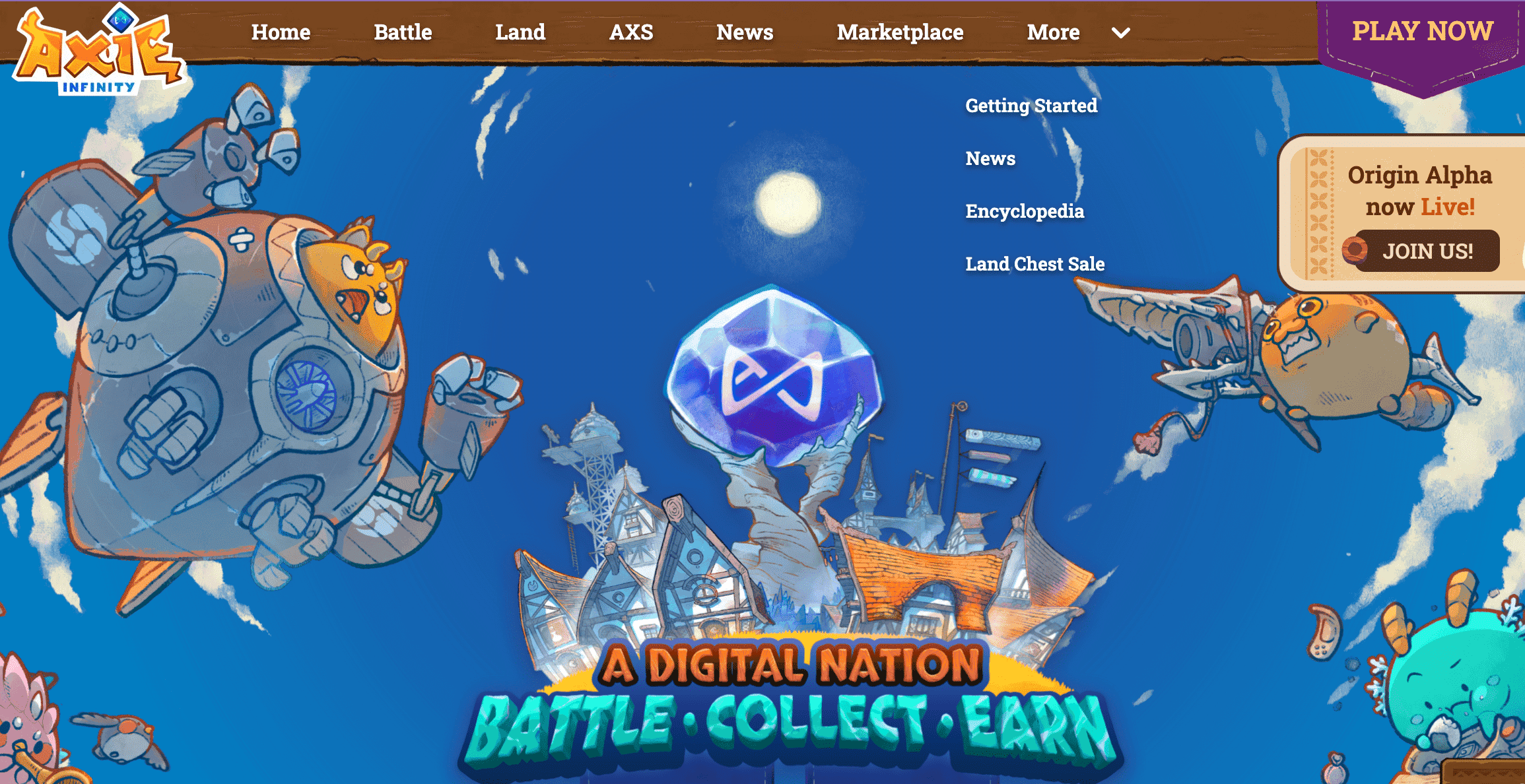
This metaverse is divided into tokenized plots, represented by LAND NFTs. These pieces of land can be used as homes or can be upgraded over time to other elements. Moreover, landowners might even end up finding AXS tokens on their plots.
Axie Infinity supports the staking of not only AXS tokens but also the LAND NFTs. For both these options, the rewards are offered in AXS tokens. The more NFTs that are staked, the more rewards that can be unlocked. On top of this, LAND NFTs can.
10. ZooKeeper – Gamified NFT Yield Farming

This added liquidity will help players of the ZooEcosystem to profit from a better farming experience and gain higher rewards during NFT gameplay. In return, the platform will offer investors ZOO tokens.
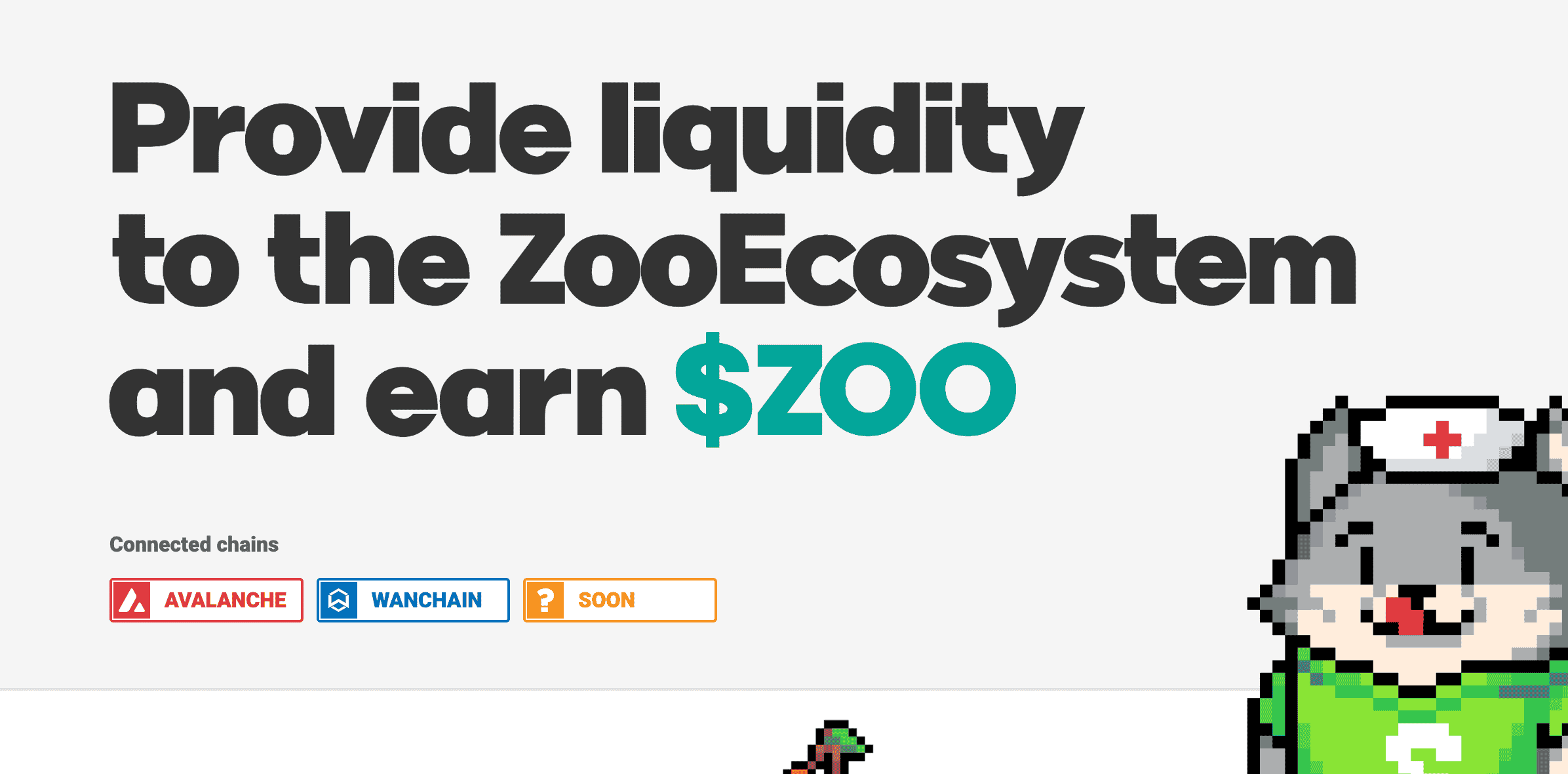
11. Roo Troop – Community-Driven NFT Project Supporting Creators
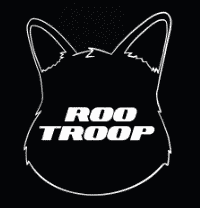 At first glance, Roo Troop might come across as just another NFT collection featuring in-house tokens. The Ethereum-based collection has 5,500 NFTs, along with three Super Roos that are rare. However, the objective of Roo Troop is not to flip its NFTs at the first opportunity.
At first glance, Roo Troop might come across as just another NFT collection featuring in-house tokens. The Ethereum-based collection has 5,500 NFTs, along with three Super Roos that are rare. However, the objective of Roo Troop is not to flip its NFTs at the first opportunity.
Instead, it allows artists and Web 3.0 creators to find jobs. Those who hold Roo Troop NFTs will have access to a Discord channel where they can find paid job postings to work in the Web 3.0/NFT space. Holders can send in core information about their skillsets, and Roo Troop forwards it to the employer.
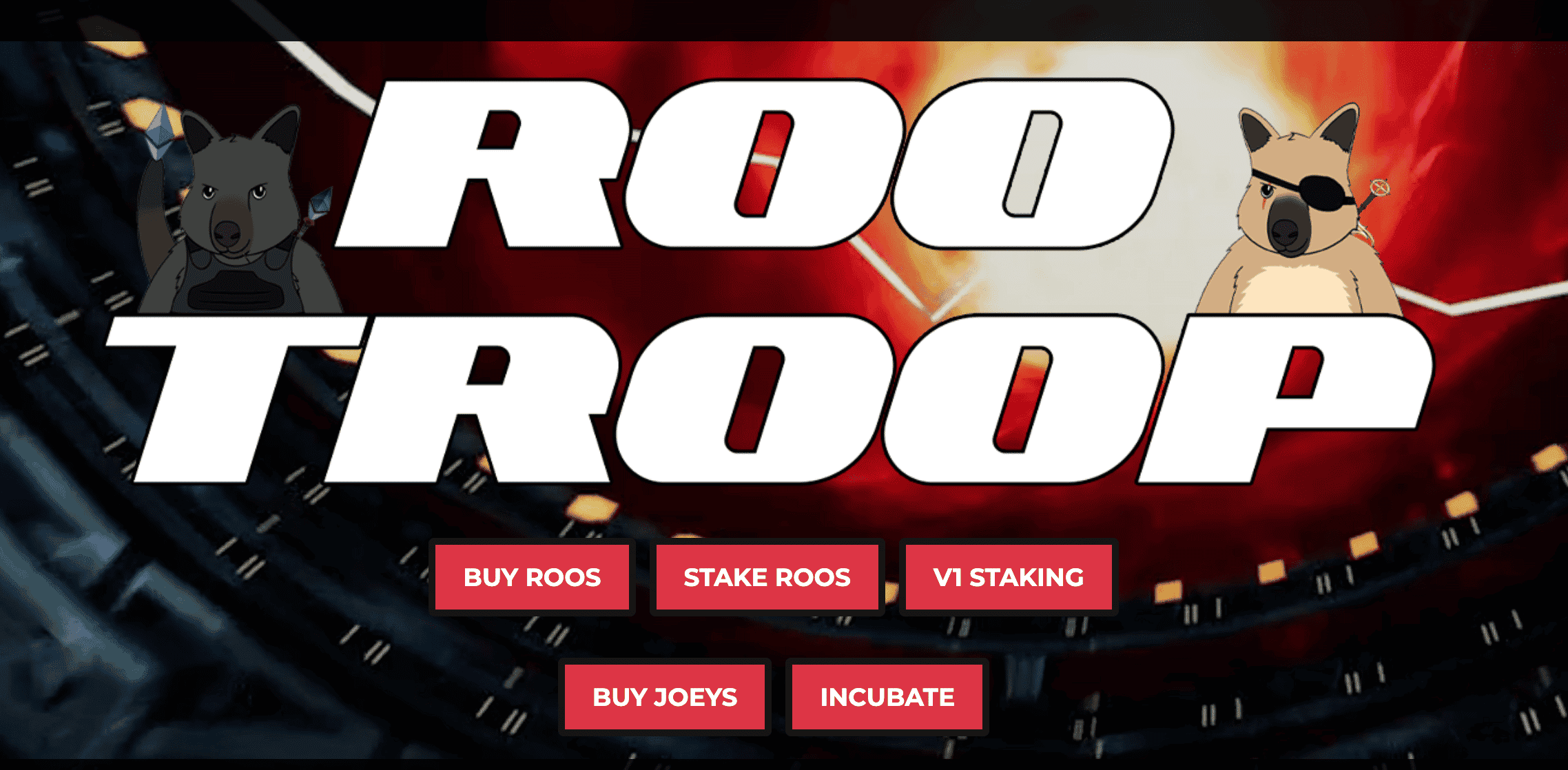
This way, Roo Troop acts as a bridge between job seekers and employers. On top of this, investors can also stake their Roos to generate ROOLAH tokens, which have several applications in this ecosystem.
What is NFT Staking?
NFT staking involves locking away non-fungible tokens onto a blockchain protocol in exchange for a reward.
From an investor’s perspective, staking isn’t entirely different from opening a savings account with a bank. However, with staking, instead of money, it will be NFTs that are deposited.
In return, investors can earn rewards, often in the form of digital tokens.
There are a number of reasons why an NFT project promotes staking:
- To drive up scarcity – If an NFT is staked, it remains locked away and cannot be sold. This means that the supply will be reduced for a period of time, potentially pushing the price up.
- To offer passive income – NFT providers also use staking as a means to offer incentives to their loyal investors. When someone locks an NFT away, they are offered a reward in return, usually via the project’s native digital token.
- To support the PoS network – Projects that are built on proof-of-stake mechanisms verify transactions with the help of validators. To do so, they might need to have access to an NFT – which is taken from the staking pool.
To get started, investors only need a wallet with support for NFTs.
That said, the requirements will vary between two different projects; therefore, it is best to check the conditions and the rewards on offer before investing in a staking NFT.
How Does NFT Staking Work?
Crypto staking is already a popular concept in the blockchain space. While NFT staking uses the same underlying concept, it is still nascent when compared to DeFi yield farming.
NFTs were initially launched as collectibles. This meant that investors would often prefer to HODL their NFTs with the hope of reselling them if and when their value increases.
This means that an investor might have to wait a long time before they can make any capital gains from an NFT – if at all.

Staking offers a new way for investors to monetize their NFTs. In fact, this rising demand has led to the emergence of several new staking NFT projects in the market. That being said, not every NFT staking project will turn out to be financially favorable.
After all, if the value of the NFT plunges after staking, the investor might face losses. This is why it is important to pick an NFT collection that has the best chance of increasing in value in the future.
Similarly, when deciding to stake NFTs, it is paramount to have a good idea of what the investing goals are. To find the best NFTs for staking, investors will need to find out what the project is about. As such, solid market research is very important.
Benefits of Staking NFTs
Is NFT staking really worth it? Ultimately, it will depend on the market value of the NFT as well as the rewards on offer.
Regardless, here are some of the benefits that might make NFT staking attractive to investors.
Simple to Get Started
For a beginner, the concept of NFT staking might sound a bit overwhelming. However, NFT staking requires practically no effort from the holder’s end. Most NFT projects offer staking facilities directly via their own website.
This means that investors can simply connect their digital wallets to the chosen platform and stake their NFTs.
Sometimes, investors will have to lock away the NFT, and when the staking period is complete, they can claim the subsequent rewards at the tap of a button. The rewards offered will then be added to the user’s wallet automatically.
Support NFT Projects
Staking is also a way to contribute to the safety and efficiency of NFT projects. It can help strengthen the project and increase the value of the NFT in the marketplace.
Similarly, some projects also offer holders of NFTs exclusive rewards. The native digital tokens that are offered as rewards also carry additional perks, such as voting power and governance in the future direction of the project.
Generate Passive Income
Needless to say, the most beneficial aspect of staking NFTs is the opportunity to generate passive income. Instead of simply holding a token, investors can stake it to earn rewards that are usually paid in cryptocurrencies.
These digital coins can be used to purchase other assets available within the project’s ecosystem or can be traded on crypto exchanges. That said, bear in mind that the value of the digital token offered can and will fluctuate.
Risks of Staking NFT Projects
While NFT staking has a few notable advantages, this strategy is not without its risks.
When staking NFTs, investors might have to lock them up for a specific duration, depending on the type of platform or collection. During this time, the value of the NFT can go up or down.
However, since the NFT will be locked up during the staking term, it might not be possible to trade them or cash out. This could lead to an investor losing a profitable opportunity in the market.
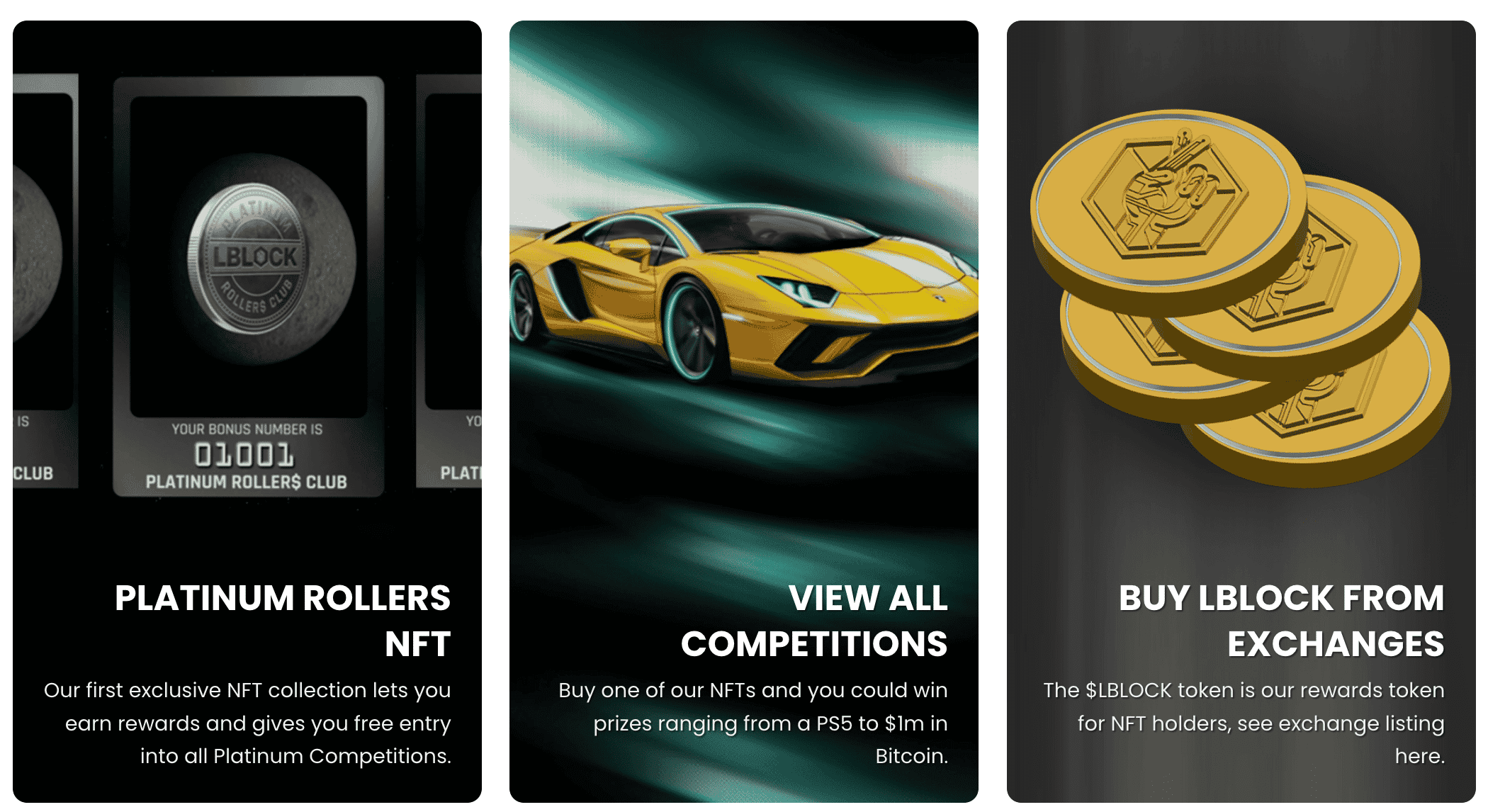
Similarly, NFTs, like crypto, are extremely volatile. This is due to high speculation in the market. So, after locking an NFT, the price of the token might drop significantly. Put otherwise, the investor won’t be able to sell during a market downturn.
Nonetheless, as we pointed out earlier, the NFT staking market is on the rise. This means that there are several new projects being launched that support flexible staking and other attractive functionalities.
How to Buy Stake NFTs
As we discussed earlier, Lucky Block has already gained popularity among crypto enthusiasts.
This platform allows all holders of Lucky Block NFTs to take part in competitions and earn rewards.
Follow the step-by-step instructions below to invest in Lucky Block NFTs today.
Step 1: Set up MetaMask
One of the first requirements to buy Lucky Block NFTs is to set up a cryptocurrency wallet. This is because NFTs, like cryptocurrencies, also have to be stored in digital wallets.
Lucky Block NFTs can be purchased only via the NFT Launchpad platform. To connect to this marketplace, investors will have to make sure they have a MetaMask wallet ready.
The MetaMask wallet is available as a mobile app for iOS and Android devices. However, it is much easier to use the MetaMask browser extension on a laptop.

After adding MetaMask to the browser, users will need to create a new wallet and set a strong password.
MetaMask will then generate a 12-word recovery phrase. It is important to note down this phrase as it is necessary to regain access to the wallet in case the password is lost.
Step 2: Add Binance Smart Chain to MetaMask
The next step is to add wBNB tokens to the MetaMask wallet, which is the payment method accepted for Lucky Block NFTs.
wBNB is a digital token that is hosted on the Binance Smart Chain. But, MetaMask does not support Binance Smart Chain by default. This means that users will have to add Binance Smart Chain to the wallet manually.
To do this, click on the ‘Add Network’ button from the MetaMask interface.
Then users can fill in the empty boxes as follows:
Step 3: Add wBNB to MetaMask
After adding Binance Smart Chain to the MetaMask wallet, investors can now proceed to transfer wBNB tokens over.
For those who do not own any wBNB tokens, the next step is to acquire them. There are several popular cryptocurrency exchanges, including Binance, that lists wBNB tokens.
If the investor already has wBNB tokens elsewhere, they can simply move them to the MetaMask wallet.
To do this, copy the BSc wallet address associated with the MetaMask account. Then, paste this as the designation address when sending wBNB from the original wallet.
Step 4: Connect MetaWallet to NFT Launchpad
Next. head over to NFT Launchpad website – which lists Lucky Block NFTs. Click on the ‘Connect Wallet’ button, and choose MetaMask.
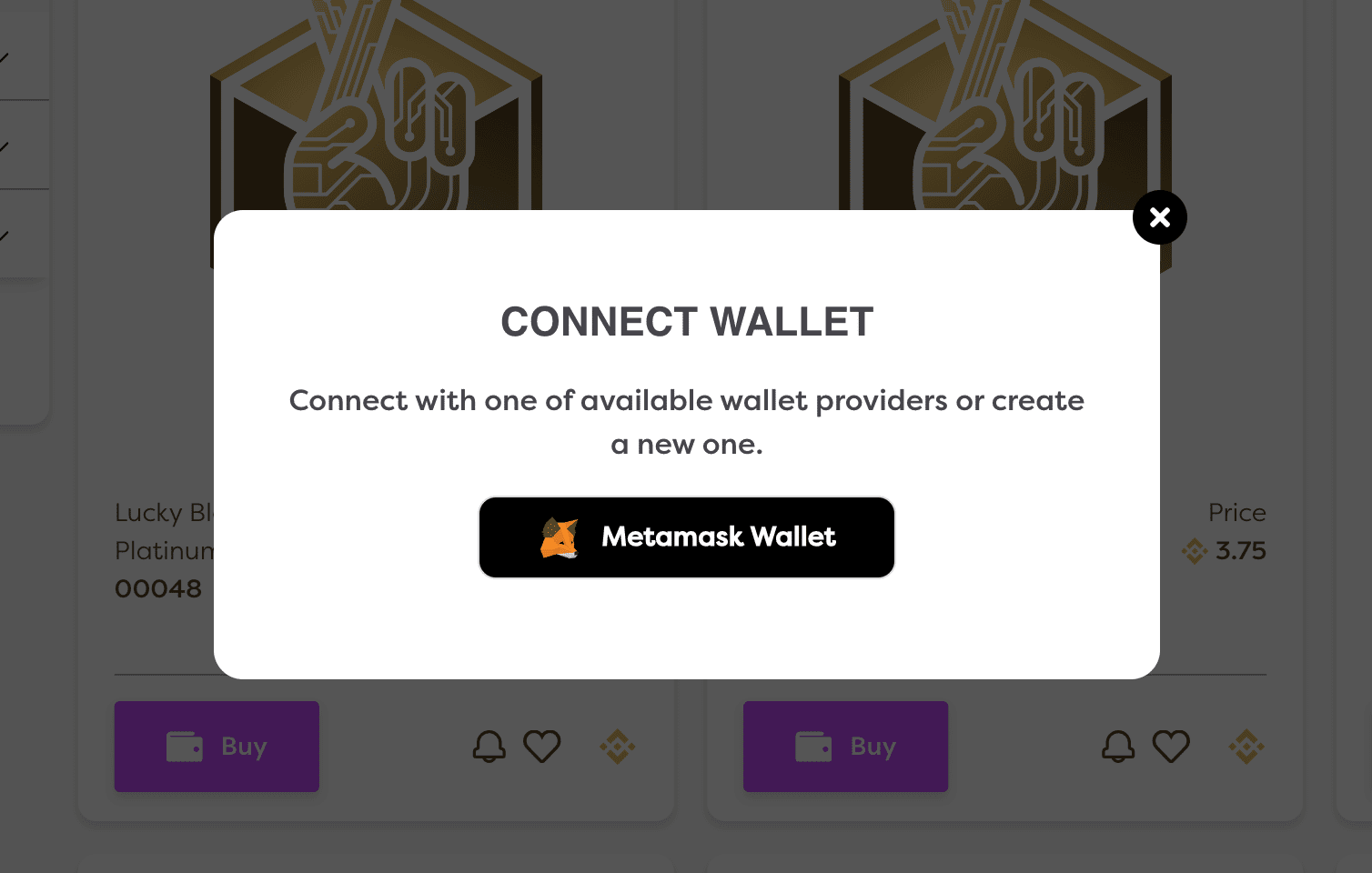
Next, sign in on MetaMask and confirm the connection to NFT Launchpad.
Step 5: Choose Lucky Block NFT
After MetaMask is linked to the NFT Launchpad, investors can browse the Lucky Block NFT they wish to purchase.

Each NFT is represented by a number, starting from 1 to 10,000. A large portion of these NFTs have already been sold, so not all numbers will be available.
Step 6: Buy Lucky Block NFT
The final step is to buy the chosen Lucky Block NFT.
To do this, click on the ‘Buy Now’ button and confirm the transaction using the MetaMask wallet.
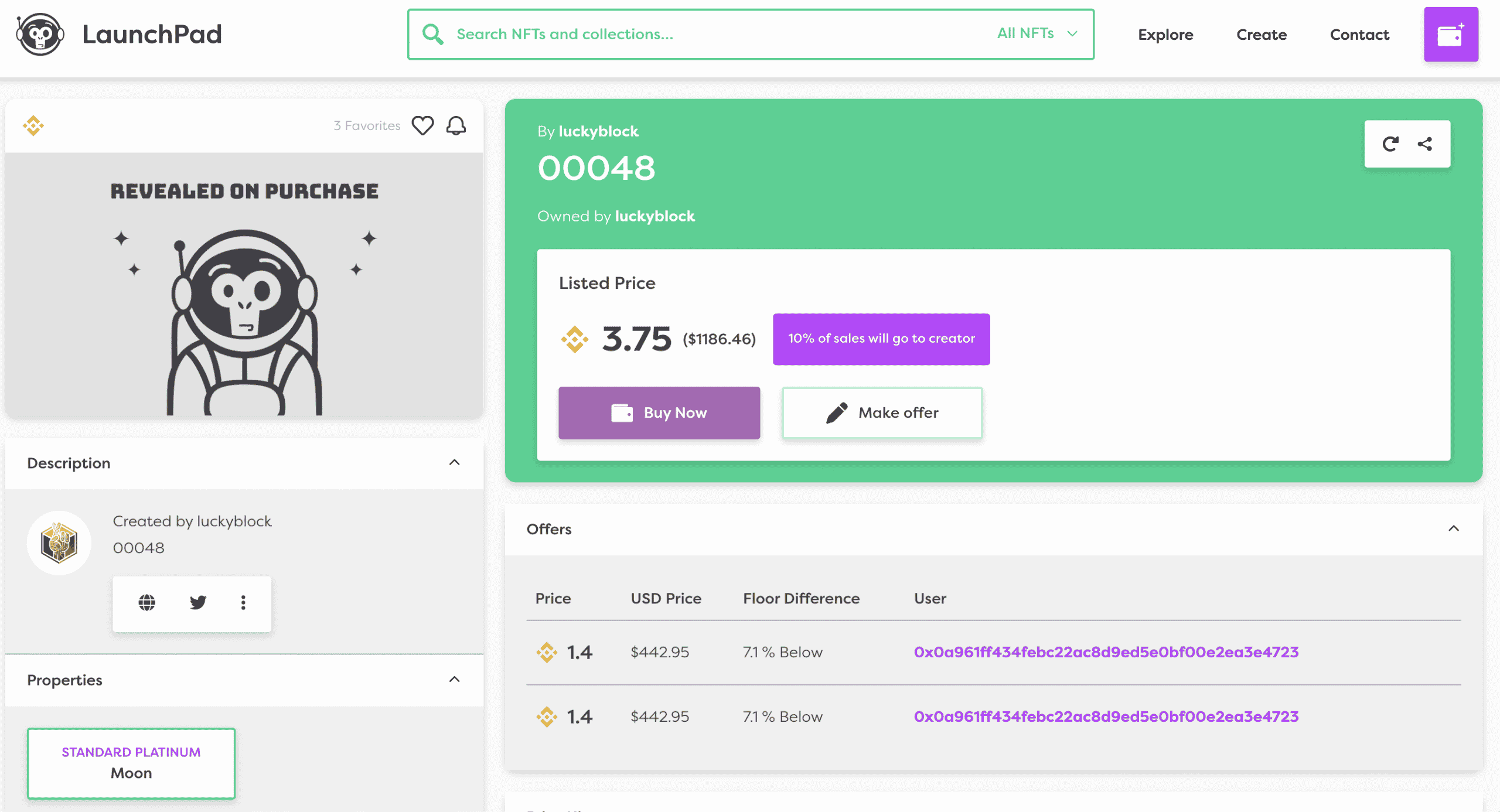
The purchase will be executed immediately, and the NFT will be deposited into the MetaMask wallet.
Conclusion
NFT staking might be a good option for investors interested in holding their non-fungible tokens for the long term. This strategy allows them to generate yields on NFTs, which would otherwise sit idle in their wallet.
That being said, there are a number of notable projects that reward NFT holders in other ways.
Tamadoge is a brand-new project that combines NFT ownership, play-to-earn gaming and a meme coin that has been pumping since its listing.
The first 100 NFTs are on sale now, with 21,000 more to be released in the coming weeks.
#nftgallery #nftnews #nftgiveaway #nftcryptonews #nftsstories #nftmarketplace #nftcryptotrading #nftdrops #pixelart #nftmagazine #nfthesearch #nftcryptopunks #nftinvesting #nfts #nft #nftart #nftcommunity #nftcollector #nftartist #nftcrypto #nftdigitalart #nftcryptoart #nftart #nftcollectors #blockchain #nftdrop #nftcryptocurrency #nftcollectibles #bitcoin #openseanft #nftcollection #cryptoartist #nftartists #nftartgallery #nftartwork

